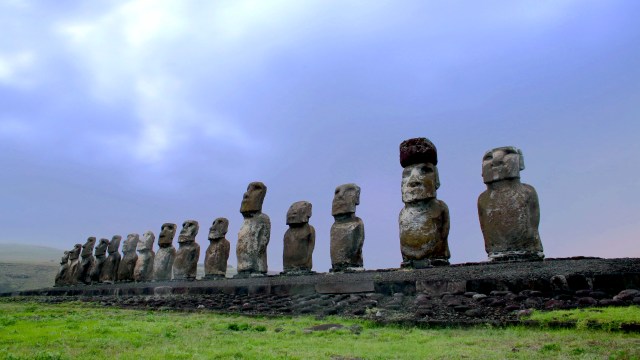Energy drinks and junk food are destroying teenage brain development

Life depends upon such a precarious balancing of forces that comprehending the totality of influences can be exhausting, yet getting lost in the minutia is equally crippling. The last few decades have produced an unforgivable amount of energy devoted to optimizing cognitive and physical performance through micronutrients and compounds deserving far less attention.
The successful growth of animals is dependent upon the totality of their environment. Our penchant for marketing and selling isolated molecules speaks more to our habit of indulging fantasies than good science. There is no such thing as a “superfood.” There is food, some of it healthy, much of it not.
However, we know certain things to be true. The detrimental effects of sugar cannot be understated, even as we’re saturated with information about the metabolic nightmare this carbohydrate wages. Then again, decades of literature on the deadly effects of tobacco hasn’t resulted in a cessation of smoking. Sugar is an even harder addiction to break, especially given its ubiquity, the invented names companies use to shield our prying eyes. And as I wrote about earlier this year, sugar is even the main culprit in our toxic love of cigarettes.
The 22.4 teaspoons of sugar the average American eats every single day is crippling at any age. New research published by the Teratology Society, in a journal focused on teenage brain development, Birth Defects Research: The Teenage Brain, finds sugar to be especially damaging for teenagers. The growing popularity of energy drinks and junk food in teens is adversely affecting latter stages of their brain development.
RMIT University’s Amy Reichelt writes that junk food negatively affects decision making and provokes reward-seeking behavior, which sets up the teen for a lifetime of poor dietary and behavioral habits. Two major neurotransmitter systems—dopamine-mediated reward signaling and inhibitory transmission—are both adversely affected by sugar-heavy junk foods during a critical phase of brain development.
Adolescence is a critical nexus when the last fundamental stages of brain development occur alongside a heightened period of behavioral alterations, thus creating a “perfect storm” where lifestyle choices can change the trajectory of brain development and exert long-term impacts on brain health.
Given how accessible cheap, energy-rich, nutrient-poor junk foods are to teenagers—teens consume the highest amounts of these foods of any age group—a lifetime of poor behavioral choices follow when no interventions are made. The stunning rise of obesity in not only adults but children and teens as well is cause for alarm. The prevalence of obesity in American children is now at 31 percent.
The changes in reward circuitry prompted by junk food result in poor cognitive and emotional performance. The teen (and future adult) suffers from increased impulsive behavior and impairments in memory consolidation and social interactions. Males in particular experience impaired behavior inhibition after consuming large volumes of sugar sweetened beverages. The hippocampus suffers in high-sugar diets, which is also known to induce cognitive deficits over time.
The overconsumption of junk foods during adolescence causes specific neurobiological changes to reward systems that impact the development of frontostriatal and frontotemporal neurocircuitry. This reduces the capacity for behavioral inhibition during adolescence, and leads to the pronounced behavioral alterations observed in cognitive tasks reliant on these systems.
The study on energy drinks, led by Christine Curran and Cecile Marczinsk at Northern Kentucky University, focuses on the deleterious effects of another form of junk food, heavy in caffeine and taurine. Alcohol is also implicated in this research, as energy drinks are especially popular mixers. This projected $60 billion global industry troubles the authors, given the insidious mixture of caffeine and taurine:
The data suggest that age is an important factor in both caffeine and taurine toxicity. Although the aged or diseased brain might benefit from taurine or caffeine supplementation, it appears that adolescents are not likely to benefit from supplementation and may, in fact, suffer ill effects from chronic ingestion of high doses.
Since energy drinks are sold as food supplements, companies are not required to list caffeine levels. While caffeine toxicity is not often discussed—45 percent of all reported cases occur in children or teens—Curran and Marczinsk note caffeine levels per energy drink range from a relatively safe 50 mg to a whopping 505 mg. One energy drink has the potential to push 70 percent of children and 40 percent of teens above adverse effect levels, considered to be 3 mg/kg/day.
Caffeine can increase blood pressure and heart rate; when combined with the amino acid taurine the likelihood that this happens increases. Using research on mice, the authors share the cognitive problems this combination presents. While they acknowledge that caffeine does indeed have positive cognitive effects in adults, they conclude:
[T]he developing brain is uniquely sensitive to caffeine’s effects through early adulthood, and fatigue in a developing child is an indicator for the need to rest and not an indication for need for caffeine administration.
The main problems are in learning and memory retention in developing brains, similar to issues experienced due to an overconsumption of junk foods. Addictive substances usually result in chronic impairment. We don’t recognize the problems when we’re in the middle of them. For teens hooked on sugar, caffeine, and taurine, adulthood is simply the seamless continuation of bad habits that have helped shape their very conception of who they are and how they function as animals.
Given that obesity is changing the DNA of future generations, until we give up our toxic love of these addictive substances it’s doubtful we’ll return to the highly functional, diverse bodies that helped us evolve over millions of years. Until we change our environment there’s little chance we’ll improve upon the cognitive and behavioral problems plaguing our society. Evolution is defined by a struggle for survival. Right now sugar is thriving, at our expense.
—
Derek Beres is the author of Whole Motion: Training Your Brain and Body For Optimal Health. Based in Los Angeles, he is working on a new book about spiritual consumerism. Stay in touch on Facebook and Twitter.





